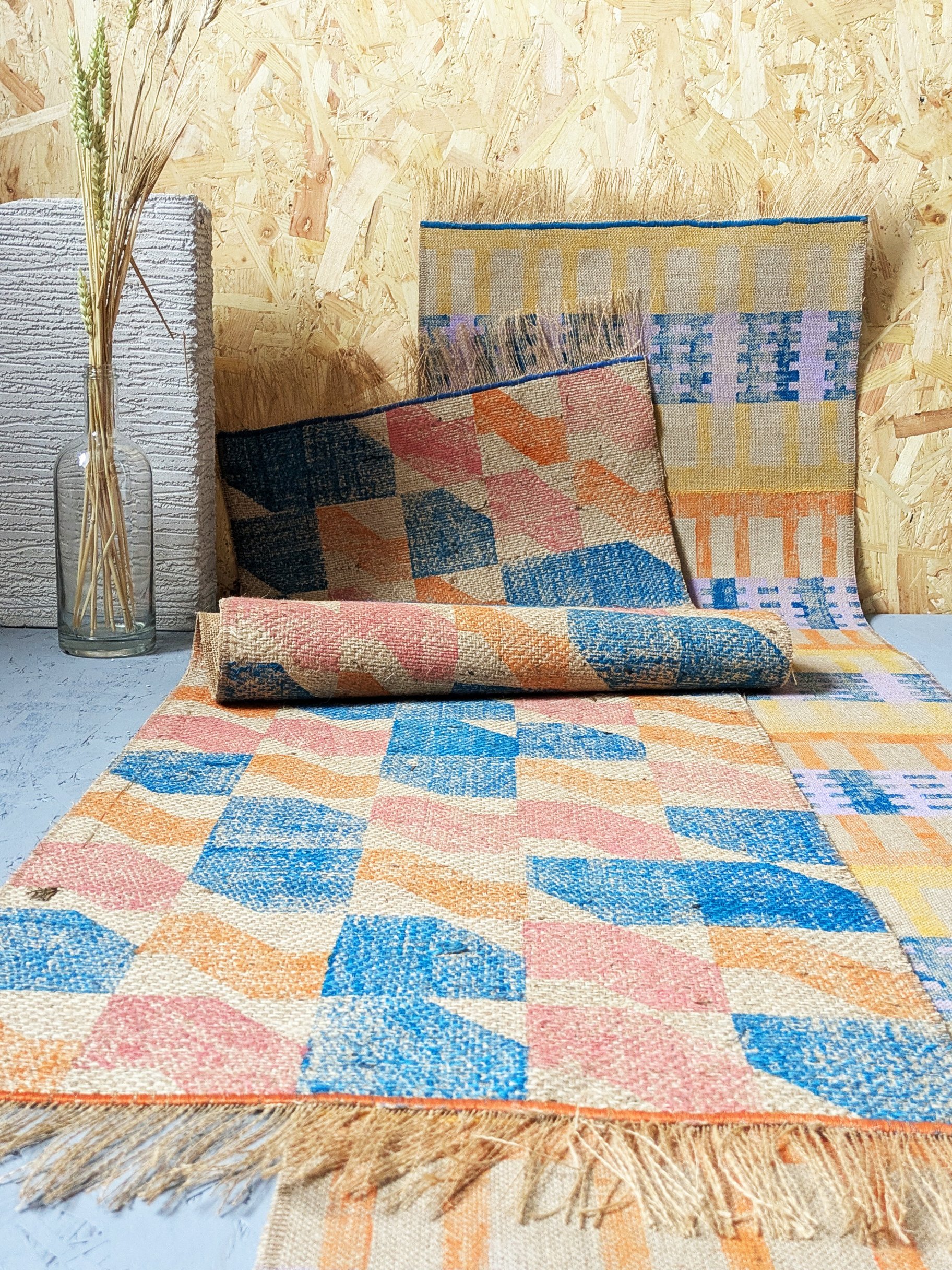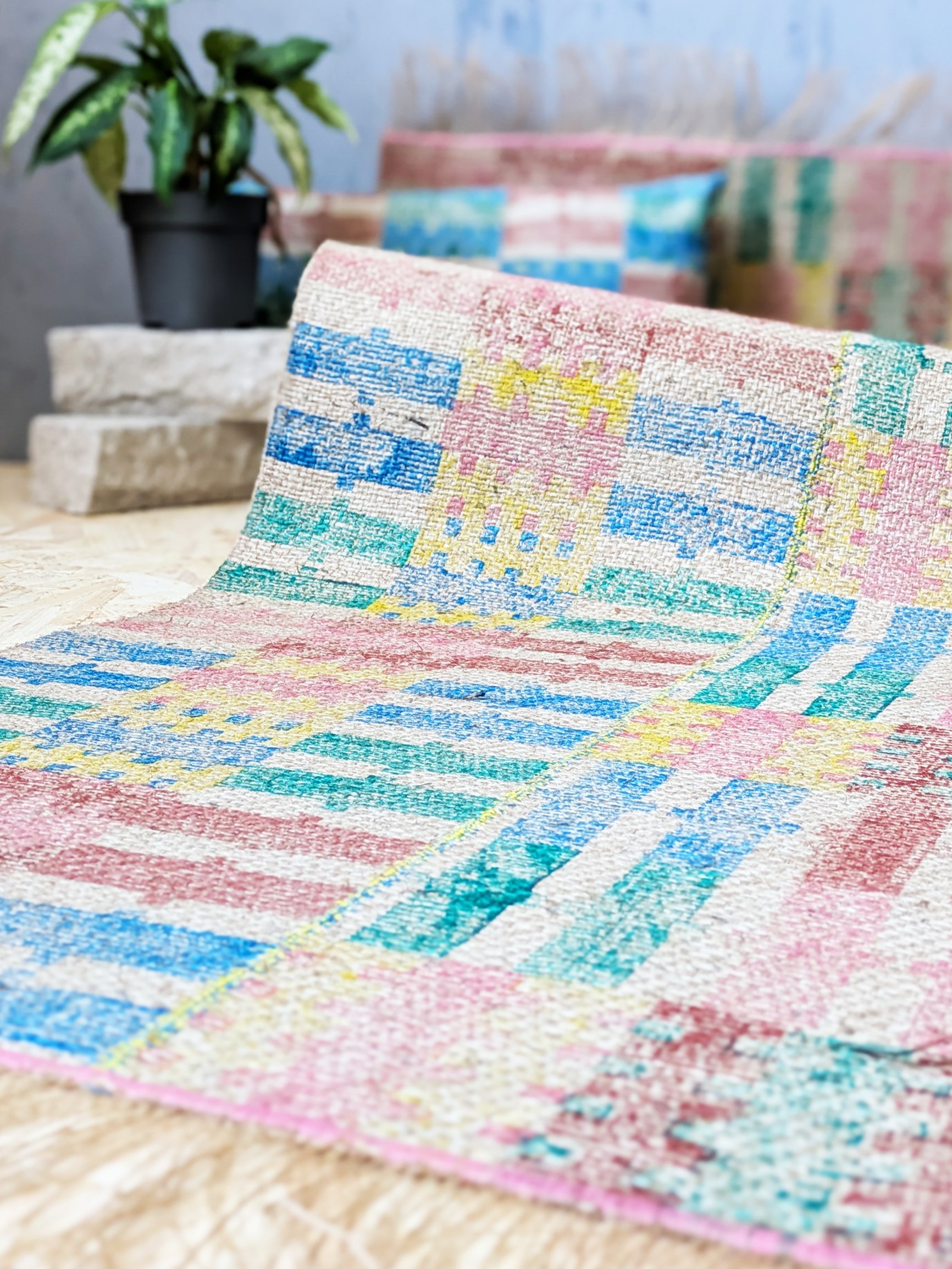after a bit of a biggie (three launches and clerkenwell design week) it’s now time for a bit of a breather. i’ve wanted to blog more about architecture but the link between the concrete buildings and the jute rugs isn’t always obvious to everyone so i thought i’d write something about it as a bit of an explainer. when we think about architecture, we often think vertically — facades, elevations, materials rising around us. but the floor is where spatial experience begins. It’s where rhythm is established, circulation is guided, and texture makes its first tactile impression.
at zitozza, i’ve always been drawn to this horizontal plane of architecture - afterall, everything gets built from the ground up. it always starts with a floor plan and i’m thinking about the layout a lot. my printed jute rugs are designed not simply as soft furnishings, but as modular surface patterns for the ground. they take inspiration from the repeat logic of tiling systems, urban grids, and brutalist detailing — and reimagine them in natural fibre and pigment.
Modular Rugs, Architectural Logic
the design of each zitozza rug begins with a modular block tile - designed on the computer, precision-cut by a machine. these blocks are based on repeating geometric systems (steps, bricks, windows, columns) which you might recognise from pavement markings, concrete formwork, or mid-century cladding systems.
in many ways, they echo the philosophy behind floor design in architecture — the way architects like alison and peter smithson used ground patterning to organise movement and space, or how gordon cullen’s serial vision theory relied on rhythmic surfaces to guide the pedestrian experience.
the prints themselves, when repeated across a jute base, create patterns that feel both structured and handmade and rustic — mathematical but never mechanical. these aren’t rugs that “fade into the floor”; they articulate it.
The Beauty of Soft Geometry
so why print, not weave? because print allows for crisper, graphic interventions on natural texture. block printing on jute brings a grainy tactility that reflects the rough honesty of these sustainable materials — not unlike exposed aggregate or board-marked concrete. it’s a dialogue between graphic clarity and material softness, one i find particularly rich when designing for interiors.
zitozza rugs aren’t trying to mimic tradition — they’re rooted in contemporary spatial language, designed to support interiors that favour simplicity, repetition, and material integrity. In homes with architectural ambition, they become not an accent but a foundation.
Designing From the Ground Up
there’s a reason architects often start their drawings with the floor plan: the floor defines flow. at zitozza i think of printed rugs as a continuation of that principle — a tactile, visible layer of design that offers rhythm, grounding, and visual structure to a space.
whether you’re designing a gallery-like living room, a textural study, or a quiet corner (of maybe a brutalist building), i invite you to explore the possibility of printed rugs as spatial tools — not just decor, but material floor drawings.




